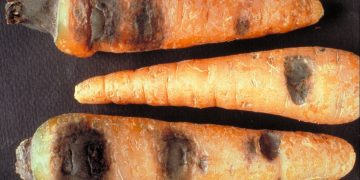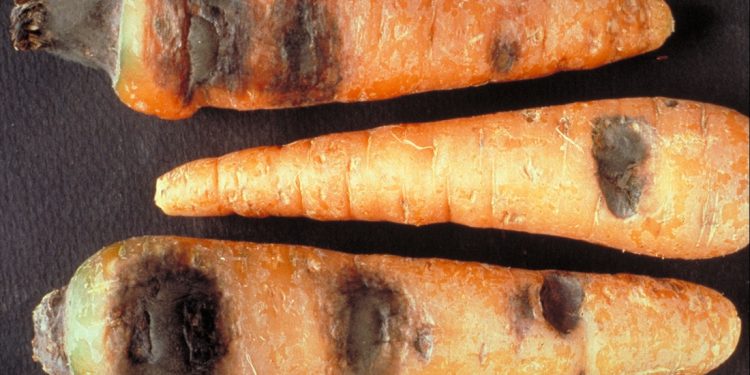#PlantDiseaseManagement #FungalDiseasePrevention #AgriculturalPestControl
Black rot is a destructive plant disease caused by a fungus that affects various fruits and vegetables, including grapes, apples, and cabbage. The fungus spreads rapidly, causing dark spots on the leaves and fruit, which can lead to complete crop loss if not managed promptly.
Prevention is the key to combatting black rot. Farmers and gardeners can take several measures to reduce the risk of the disease spreading, such as choosing resistant plant varieties, maintaining good plant hygiene, and using fungicides as a last resort.
One effective method of preventing black rot is crop rotation. Rotating crops can help break the disease cycle by reducing the amount of fungus present in the soil. This can be achieved by planting different crops in a particular area each season, thereby reducing the likelihood of the disease returning in subsequent years.
Another preventative measure is pruning. Removing infected plant material and dead wood can prevent the fungus from spreading and improve air circulation, reducing the humidity that encourages the growth of the fungus.
The consequences of black rot can be severe. In addition to crop loss, the disease can also impact the quality of the produce that does survive. Fruits and vegetables affected by black rot can be unsightly, unmarketable, and have a shorter shelf life.
Prevention is the best strategy for managing black rot. By implementing preventative measures such as crop rotation and pruning, farmers and gardeners can reduce the risk of crop loss and improve the quality of their produce.































